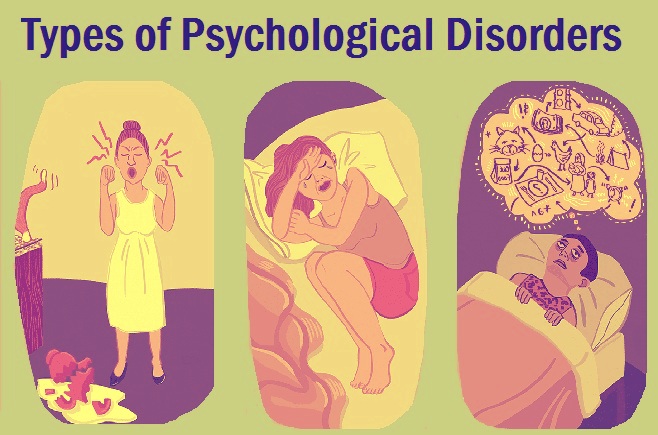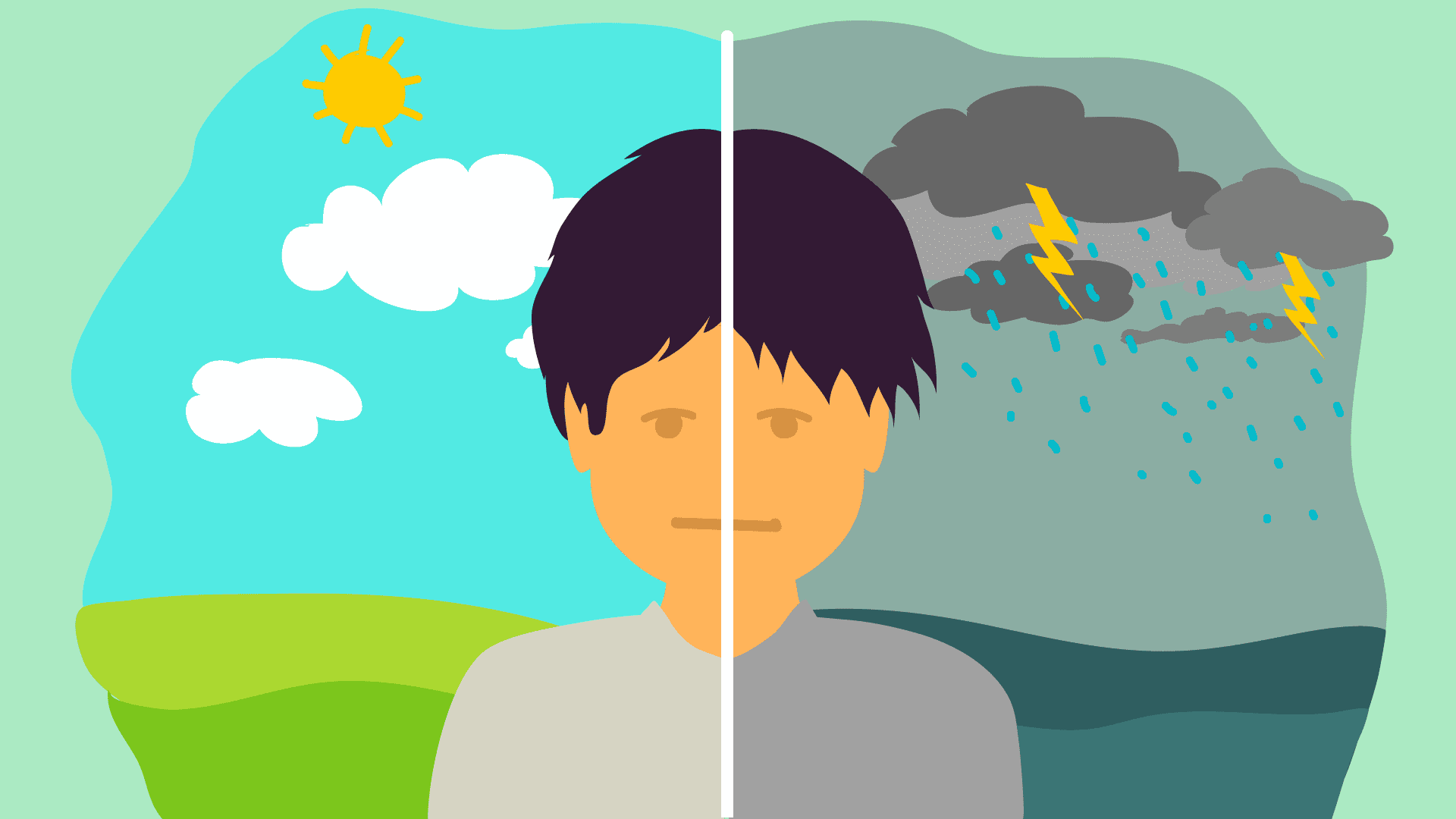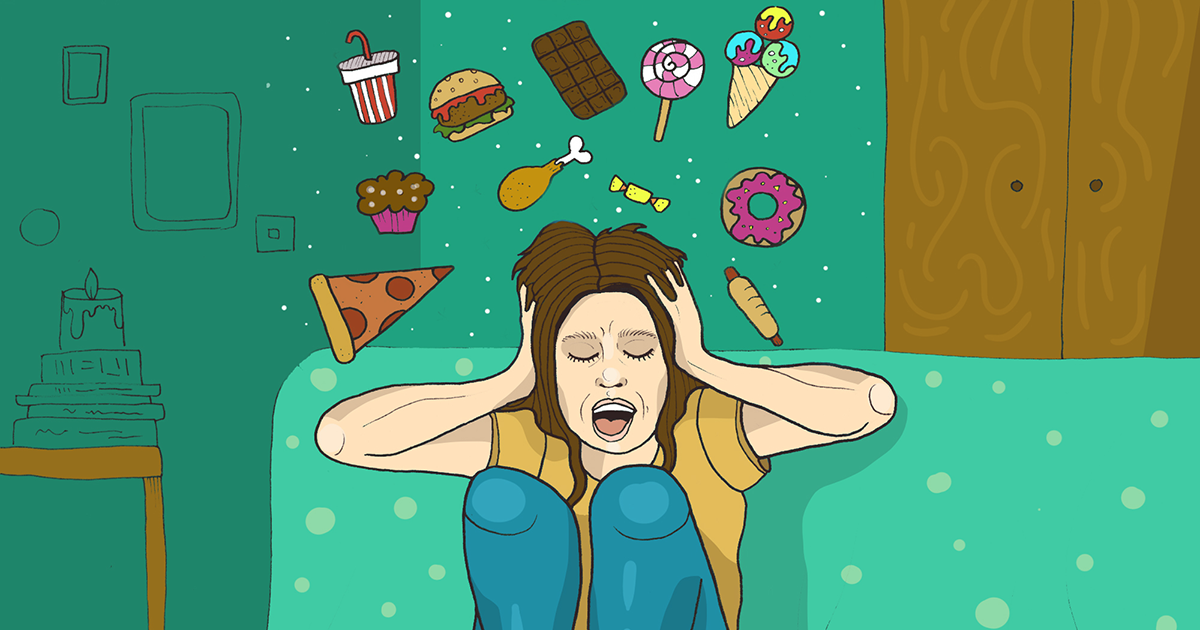

Mental Disorders Explained: A Complete Guide to Types and Symptoms
Mental disorders—also referred to as mental illnesses—are medical conditions that impact how a person thinks, feels, behaves, and relates to others. These disorders are not just temporary emotional hiccups or bad days—they can be chronic or episodic and can deeply affect a person’s ability to function normally in daily life. Whether it’s maintaining relationships, succeeding at school or work, or simply getting through the day, a mental disorder can become an overwhelming hurdle.
Everyone experiences mental ups and downs, but when symptoms persist and start interfering with life responsibilities or well-being, that’s when it transitions from a passing concern into a diagnosable disorder. These persistent symptoms not only cause personal distress but often lead to complications in one’s personal, professional, and social life.
Thankfully, many of these conditions are manageable. With the right support system, access to treatment, and often a combination of medications and psychotherapy, individuals living with mental disorders can lead fulfilling, productive lives.
Key Facts About Mental Disorders
-
Mental disorders come in many forms, each with its own unique set of symptoms and behavioral traits. Despite the variety, they are commonly defined by a disruption in thought processes, emotional control, behavioral norms, and interpersonal connections.
-
Examples of widely recognized mental disorders include depression, bipolar disorder, schizophrenia, autism spectrum disorder, and dementia.
-
Preventive strategies, especially for conditions like depression, can be highly effective when implemented early. These may include stress reduction techniques, healthy lifestyle choices, and mental health education.
-
Effective treatments do exist, ranging from psychotherapy and medication to lifestyle interventions and community support programs. The earlier the intervention, the better the outcome tends to be.
-
One of the most critical elements for recovery is access—access to mental health services, qualified professionals, and supportive environments that promote healing rather than stigmatization.
A Look at Common Mental Health Conditions
A Categorized Overview of Mental Disorders
The following list, while not exhaustive, covers some of the primary types of mental health disorders as classified by the Diagnostic and Statistical Manual of Mental Disorders (DSM-5), which is considered the gold standard for psychiatric diagnosis. The DSM-5, released in 2013, provides standardized language and criteria that mental health professionals use to diagnose psychological conditions.
1 – Neurodevelopmental Disorders
These disorders generally begin in childhood and are typically noticeable during infancy, toddlerhood, or early school years. They involve developmental delays that affect personal, social, academic, or occupational functioning.
Intellectual Disability (Intellectual Developmental Disorder)
Previously referred to as mental retardation, this condition manifests before the age of 18 and involves limitations in intellectual functioning—such as reasoning, problem-solving, and learning—as well as difficulties in adaptive behaviors. These limitations can be observed through standardized testing like IQ assessments, where a score below 70 often indicates a significant deficit. Everyday skills such as dressing, communication, and social behavior are also impacted.
Global Developmental Delay
Diagnosed in children under age five, this label is applied when there’s a noticeable lag in developmental milestones across several areas: cognitive abilities, motor coordination, speech and language, and social interaction. It is often a provisional diagnosis given before a child is old enough for formal IQ testing.
Communication Disorders
These disorders affect how a person understands, processes, or uses language. The DSM-5 outlines four major types:
-
Language Disorder
-
Speech Sound Disorder
-
Childhood-Onset Fluency Disorder (commonly known as stuttering)
-
Social (Pragmatic) Communication Disorder
These issues can severely impact both educational and social development.
Autism Spectrum Disorder (ASD)
ASD is marked by difficulties in social interaction, communication challenges, and repetitive behaviors. The severity and specific symptoms can vary greatly among individuals. For a diagnosis, symptoms must appear during early development and must impair day-to-day functioning—whether in relationships, academics, or professional life.
Attention-Deficit/Hyperactivity Disorder (ADHD)
ADHD is characterized by persistent inattention, hyperactivity, and impulsivity that affects daily life. Symptoms typically appear before age 12 and must be present in multiple settings—like at school, at home, and in social situations—to meet diagnostic criteria. Individuals may struggle with focus, staying organized, or controlling impulses, all of which can interfere with education, work, and personal relationships.
2 – Bipolar and Related Mood Disorders
Bipolar disorders are characterized by dramatic mood changes—from emotional highs (mania or hypomania) to devastating lows (depression). These mood swings are not simply fleeting—they're intense, disruptive, and often accompanied by shifts in energy, activity levels, and the ability to carry out daily tasks.
Manic Episodes
A manic episode is more than just feeling upbeat or energetic—it includes elevated mood, increased self-esteem, reduced need for sleep, impulsive decisions, and racing thoughts. The person might engage in risky behavior, like overspending, substance use, or dangerous driving, and feel invincible even when their actions pose real dangers.
Depressive Episodes
On the flip side, depressive episodes involve deep sadness, lethargy, irritability, and a loss of interest in things once enjoyed. These episodes often come with insomnia or oversleeping, feelings of guilt or worthlessness, and even suicidal thoughts. Functioning during these periods becomes extremely difficult, and the emotional toll affects both the person and those around them.
It's important to note that both manic and depressive states are part of the same disorder and often cycle unpredictably. However, with structured treatment plans that usually include both medication and psychotherapy, individuals with bipolar disorder can manage their condition and lead stable lives.
DSM-5 Note:
The current diagnostic manual emphasizes that a diagnosis now requires not just changes in mood, but observable shifts in energy and activity levels as well.
3 – Anxiety Disorders
Anxiety disorders go far beyond temporary worry or fear. They involve persistent and excessive fear or anxiety that interferes with everyday activities. While fear is a reaction to current threats, anxiety is more about anticipation of future trouble—even when the actual threat is minimal or imagined.
Generalized Anxiety Disorder (GAD)
GAD is marked by constant and uncontrollable worry about a variety of routine events or activities—far beyond what most people would consider reasonable. This level of anxiety can manifest physically, leading to fatigue, muscle tension, or sleep disturbances.
Agoraphobia
Agoraphobia is not just fear of open spaces—it’s the fear of being in any situation where escape might be difficult, or where help might not be available during a panic attack. For some, it becomes so severe they feel unable to leave home altogether.
Social Anxiety Disorder
This condition causes intense fear of being judged or embarrassed in social settings. Everyday tasks like speaking up in a meeting or going to a party become sources of extreme distress, leading many people to avoid such interactions entirely.
Specific Phobias
A specific phobia involves overwhelming fear of a particular object or situation—like spiders, flying, or blood. These fears go beyond discomfort; they’re intense enough to cause physical symptoms like nausea, sweating, or even a full-blown panic attack.
Panic Disorder
People with panic disorder suffer from sudden, terrifying panic attacks—often without any warning or trigger. The fear of future attacks can become so debilitating that it leads to avoidance behaviors, severely limiting personal freedom and lifestyle.
Separation Anxiety Disorder
Often associated with young children, separation anxiety can also affect teenagers and adults. It involves an intense fear of being apart from loved ones or attachment figures. This fear can prevent individuals from pursuing independence, education, or relationships.
Survey Insight:
One major study estimated that nearly 1 in 5 American adults experience at least one anxiety disorder at some point in their lives.
4 – Trauma and Stressor-Related Disorders
Trauma-related disorders are psychological conditions that arise in response to distressing life experiences such as violence, accidents, or natural disasters. These disorders were once grouped under anxiety disorders, but are now classified separately due to their distinct origins and symptom patterns.
Acute Stress Disorder
Acute stress disorder develops shortly after exposure to a traumatic event and lasts for up to one month. Individuals may experience flashbacks, nightmares, numbness, and dissociation. It's like the mind's emergency response system becomes stuck in overdrive.
Adjustment Disorders
When life throws a curveball—divorce, job loss, or the death of a loved one—some people develop emotional or behavioral symptoms in response. These reactions go beyond normal sadness or stress and may interfere with everyday life. Both children and adults can be affected.
Post-Traumatic Stress Disorder (PTSD)
PTSD occurs after exposure to events involving death, serious injury, or sexual violence. It involves persistent re-experiencing of the trauma through intrusive memories, nightmares, and flashbacks. Avoidance of reminders, heightened alertness, and emotional numbness are also common. PTSD can take months or years to surface and may require long-term therapy.
Did You Know?
Symptoms may include outbursts of anger, startling easily, struggling to concentrate, or reliving the event as if it were happening again.
Reactive Attachment Disorder
This disorder usually appears in children who have experienced severe neglect or inconsistent caregiving. It is characterized by a lack of emotional attachment and responsiveness toward caregivers, leading to difficulties in forming healthy relationships later in life.
5 – Dissociative Disorders
Dissociative disorders are a group of mental health conditions that involve a disconnect or separation between elements of a person’s identity, memory, perception, or sense of reality. In simple terms, the mind becomes fragmented in ways that affect how someone experiences their thoughts, surroundings, and even who they are.
These conditions are often triggered by overwhelming trauma or stress, especially during childhood, and they serve as the brain’s attempt to shield the individual from painful experiences or unbearable emotions.
Dissociative Amnesia
Unlike ordinary forgetfulness, dissociative amnesia involves significant memory loss that goes beyond typical lapses. People with this condition may forget personal details, events, or even entire periods of their lives—especially if those memories are associated with trauma or stress. The amnesia may last for a few hours, days, or even years and often arises suddenly. Importantly, there’s no physical injury or brain damage behind the memory loss—just psychological factors.
Dissociative Identity Disorder (DID)
Formerly known as multiple personality disorder, DID involves the presence of two or more distinct personality states or identities. Each identity may have its own name, history, behaviors, and even voice or mannerisms. Individuals with DID often experience time loss, memory gaps, or find themselves in unfamiliar places with no recollection of how they got there. This condition typically develops in response to severe and repeated trauma, particularly during early childhood.
Depersonalization/Derealization Disorder
This disorder causes a person to feel disconnected from themselves (depersonalization) or from their surroundings (derealization). Imagine watching your life unfold as if it were a movie, or feeling like the world around you isn’t quite real. These feelings are intrusive, distressing, and often recurrent. People with this disorder know what they’re experiencing isn’t “normal,” but they feel powerless to stop it.
6 – Somatic Symptom and Related Disorders
Somatic symptom disorders involve physical symptoms that cause significant emotional distress and life disruption—but without a clear medical explanation. These symptoms are real and deeply felt, even if diagnostic tests don’t reveal a medical cause. The key issue here is not whether the symptoms exist, but how the individual reacts to them.
Somatic Symptom Disorder
This disorder is defined by a strong focus on physical symptoms—such as pain, fatigue, or dizziness—that leads to emotional distress and difficulty managing day-to-day life. Even when medical tests show no underlying issue, the person’s intense worry and repeated healthcare visits persist. The distress and preoccupation are what distinguish this condition from ordinary health concerns.
Illness Anxiety Disorder
Previously known as hypochondriasis, this condition centers on an overwhelming fear of having—or developing—a serious illness. A person might misinterpret minor sensations as signs of something catastrophic, and medical reassurance rarely eases their concern. The worry becomes a persistent mental loop, affecting behavior and peace of mind.
Insight:
This disorder is not about faking illness. It's about the mental toll caused by the fear itself, leading to repeated doctor visits, excessive health research, or avoidance of situations that might pose health risks.
Conversion Disorder (Functional Neurological Symptom Disorder)
Here, individuals experience neurological symptoms—like paralysis, blindness, or seizures—that have no identifiable medical cause. These symptoms often follow psychological stress or trauma. Although the brain and body appear structurally sound, the person’s functioning is genuinely impaired. The condition reflects how emotional conflicts can be converted into physical symptoms.
Factitious Disorder
Unlike somatic symptom disorder, factitious disorder involves the intentional fabrication or exaggeration of physical or psychological symptoms. The person may go to great lengths to appear ill—sometimes even harming themselves or tampering with test results. One extreme example is Munchausen syndrome. The motivation isn’t financial or legal gain, but rather the desire to assume the role of a patient and receive attention and sympathy.
7 – Eating and Feeding Disorders
Feeding and eating disorders are marked by persistent, unhealthy eating behaviors that impact both physical and mental health. They can involve extreme food restriction, overeating, or abnormal patterns such as regurgitation of food or consumption of non-food items.
Anorexia Nervosa
This condition involves extreme restriction of food intake, an intense fear of gaining weight, and a distorted body image. Individuals often perceive themselves as overweight even when they are dangerously underweight. This condition isn’t just about food—it’s rooted in a deep struggle with control, perfectionism, and self-worth.
Bulimia Nervosa
Bulimia involves episodes of binge eating—consuming large quantities of food in a short time—followed by compensatory behaviors like vomiting, fasting, or excessive exercise. Unlike anorexia, people with bulimia may maintain a normal weight, which makes it harder to detect. The cycle is driven by guilt, shame, and the desire to undo the effects of bingeing.
Rumination Disorder
More common in children and individuals with developmental disorders, rumination involves chewing, swallowing, and then regurgitating food—either to spit it out or re-swallow. While it may sound unusual, it can cause serious complications like malnutrition, dental issues, and esophageal damage.
Did You Know?
Chronic rumination can lead to nutritional deficiencies and delayed growth in children.
Pica
Pica is the persistent craving and consumption of non-nutritive, non-food items—like dirt, chalk, hair, or paint. While common in young children, it’s considered a disorder when it continues past developmental stages or occurs in adults. Pica can lead to dangerous health consequences including poisoning, gastrointestinal issues, and infections.
Binge-Eating Disorder
This disorder involves repeated episodes of consuming large amounts of food—often rapidly and to the point of discomfort—without subsequent purging. People with this condition often feel ashamed, distressed, and out of control during binge episodes. It is the most common eating disorder and can lead to obesity, diabetes, and heart problems if left untreated.
8 – Sleep-Wake Disorders
Sleep disorders don’t just affect nighttime rest—they influence how we think, feel, and function during the day. These disorders range from insomnia to abnormal behaviors during sleep and are often linked to broader health and mental health conditions.
Narcolepsy
Narcolepsy is characterized by an overwhelming urge to sleep, often at inappropriate times such as during a conversation, meal, or while driving. Individuals may also experience cataplexy, a sudden loss of muscle control triggered by emotions like laughter or surprise.
Insomnia Disorder
This common disorder involves persistent difficulty falling asleep, staying asleep, or getting restful sleep. It becomes diagnosable when it causes distress or impairs functioning during the day, affecting concentration, mood, or performance.
Hypersomnolence Disorder
This disorder is the opposite of insomnia—it’s characterized by excessive sleepiness, even after a full night’s rest. People may fall asleep at work, during conversations, or while eating. The fatigue often feels unrelenting, no matter how much sleep they get.
Breathing-Related Sleep Disorders
Conditions like sleep apnea fall into this category. These disorders involve abnormal breathing patterns during sleep that cause repeated awakenings. Poor sleep quality contributes to daytime fatigue, irritability, and concentration difficulties.
Parasomnias
Parasomnias refer to unusual behaviors during sleep—such as sleepwalking, night terrors, talking, eating, or acting out dreams. These behaviors typically occur during the transition between sleep stages and can sometimes be dangerous if the person is unaware of their surroundings.
Restless Legs Syndrome (RLS)
RLS causes uncomfortable sensations in the legs accompanied by an irresistible urge to move them. Symptoms worsen in the evening and can make falling or staying asleep nearly impossible. The sensations may feel like burning, itching, or crawling deep beneath the skin.
Note on Classification:
The DSM-5 updated its sleep disorder classifications to emphasize that these conditions deserve independent clinical attention—they’re not just symptoms of other mental or physical illnesses, but disorders in their own right.
9 – Impulse-Control and Conduct-Related Disorders
Impulse-control disorders are mental health conditions where individuals struggle to resist urges that may be harmful to themselves or others. These behaviors often break societal norms and, in more severe cases, laws. They are marked by poor emotional regulation and an inability to delay gratification.
Kleptomania
Kleptomania involves repeated and uncontrollable urges to steal items that are often unnecessary or of little value. The theft isn’t done out of necessity or for personal gain, but rather in response to mounting internal tension—followed by a sense of relief or gratification. This cycle can cause significant distress and guilt.
Pyromania
People with pyromania experience a fascination with fire and deliberately set fires multiple times, not with malicious intent or for revenge, but to relieve inner tension. The act brings a sense of pleasure or emotional release. Like other impulse-control disorders, pyromania can be extremely dangerous to the individual and others.
Intermittent Explosive Disorder
This disorder is characterized by impulsive, aggressive outbursts that are vastly disproportionate to the triggering situation. A person may respond to minor annoyances with yelling, physical violence, or property destruction. These reactions are not premeditated and often leave the individual feeling remorseful afterward.
Conduct Disorder
Diagnosed in children and teens under 18, conduct disorder involves a repetitive pattern of behavior that violates societal rules or the rights of others. Symptoms include aggression toward people or animals, destruction of property, deceitfulness, and serious rule violations. If left untreated, it may develop into antisocial personality disorder in adulthood.
Oppositional Defiant Disorder (ODD)
ODD is characterized by persistent defiance, irritability, and hostility toward authority figures. Children with this disorder frequently argue with adults, refuse to follow rules, and act in ways that seem purposefully annoying or vindictive. While occasional defiance is normal, ODD is marked by consistency and severity.
10 – Depressive Disorders
Depressive disorders are a group of mood conditions defined by persistent feelings of sadness, emptiness, and irritability, often accompanied by physical and cognitive disturbances. These symptoms disrupt one’s ability to function and enjoy life.
Disruptive Mood Dysregulation Disorder
Primarily diagnosed in children, this disorder features extreme irritability, anger, and frequent temper outbursts that are far beyond typical reactions. The mood between outbursts remains persistently irritable or angry.
Major Depressive Disorder
This condition includes a prolonged period of sadness or loss of interest in activities once enjoyed. Other symptoms include fatigue, sleep disturbances, changes in appetite, difficulty concentrating, and feelings of worthlessness. It can be severely disabling if not treated.
Persistent Depressive Disorder (Dysthymia)
A chronic form of depression, dysthymia involves symptoms that are less severe than major depression but last for two years or more. People often function in daily life but feel consistently down or emotionally numb.
Other or Unspecified Depressive Disorders
Used when a person’s symptoms cause significant distress or impairment but don’t match the criteria for specific depressive disorders. The condition still warrants clinical attention.
Premenstrual Dysphoric Disorder (PMDD)
A severe form of premenstrual syndrome, PMDD includes mood swings, depression, irritability, and anxiety that occur in the luteal phase of the menstrual cycle. Symptoms typically resolve within a few days after menstruation starts.
Substance/Medication-Induced Depressive Disorder
This occurs when depressive symptoms arise during substance use, intoxication, or withdrawal. It may involve alcohol, drugs, or prescription medications.
Depressive Disorder Due to Another Medical Condition
Depression may also be a direct result of a medical illness like Parkinson’s disease, cancer, or diabetes. Diagnosis requires a clear medical cause for the depressive symptoms.
Symptoms Common Across Depressive Disorders Include:
-
Persistent sadness or hopelessness
-
Loss of interest in daily activities
-
Changes in weight or appetite
-
Fatigue or low energy
-
Feelings of guilt or worthlessness
-
Difficulty concentrating
-
Sleep problems
-
Suicidal thoughts or preoccupation with death
If you're in crisis:
Call the National Suicide Prevention Lifeline at 1-800-273-8255, or dial emergency services for immediate help.
11 – Substance-Related and Addictive Disorders
This category involves disorders stemming from the misuse of substances—ranging from alcohol and nicotine to prescription medication and illicit drugs. The hallmark of these conditions is compulsive use despite harmful consequences.
Alcohol-Related Disorders
These include problematic drinking behaviors, such as binge drinking, alcohol dependency, and alcohol-induced mental or physical symptoms. Alcohol remains the most widely abused substance in the U.S.
Cannabis-Related Disorders
Characterized by patterns of cannabis use that result in clinical impairment or distress. Symptoms may include inability to cut back, tolerance, withdrawal, and continued use despite problems.
Inhalant Use Disorders
Involves the inhalation of toxic substances like solvents, paint, or glue. Despite the short-lived high, chronic use can lead to serious health issues, including brain damage.
Stimulant Use Disorders
This includes misuse of substances such as cocaine, methamphetamines, and prescription amphetamines. Users may develop tolerance, intense cravings, and experience psychosis, agitation, or heart problems.
Tobacco Use Disorder
Though legal and socially accepted in many places, tobacco addiction is real and serious. Withdrawal symptoms and the inability to quit—even when health is declining—mark this disorder.
Gambling Disorder
Gambling disorder has been newly classified alongside substance disorders because it activates the brain’s reward systems in similar ways. It involves compulsive betting despite negative financial and personal consequences. People may chase losses, hide their behavior, or fall into deep debt.
12 – Neurocognitive Disorders
Neurocognitive disorders are acquired (not developmental) conditions that lead to a decline in cognitive functions such as memory, decision-making, attention, and language. These changes often result from physical changes or damage to the brain.
Delirium
Delirium is a sudden and often reversible state of confusion that can develop in hours or days. It’s usually caused by medical conditions like infections, medications, or metabolic imbalances. Symptoms include disorientation, difficulty focusing, hallucinations, and agitation.
Major and Mild Neurocognitive Disorders
These include more gradual forms of cognitive decline, such as:
-
Alzheimer’s disease
-
Parkinson’s disease
-
HIV-related cognitive impairment
-
Vascular dementia
The key difference between major and mild forms lies in the severity of decline and how much daily life is affected.
13 – Schizophrenia Spectrum and Other Psychotic Disorders
Schizophrenia is a chronic and severe mental illness that affects how a person thinks, feels, and behaves. It typically emerges in late adolescence or early adulthood and can become debilitating without treatment.
To be diagnosed, a person must show at least two of the following symptoms for one month or more:
-
Delusions – firmly held beliefs not based in reality
-
Hallucinations – seeing or hearing things that aren’t there
-
Disorganized speech – incoherence or loose associations
-
Disorganized or catatonic behavior
-
Negative symptoms – such as apathy, lack of emotion, or social withdrawal
Diagnosis also requires that symptoms persist for six months and interfere with daily functioning. Earlier symptoms may include social withdrawal, decline in academic performance, and lack of motivation.
Research Insight:
Genetic factors, neurochemical imbalances (especially involving dopamine), brain structure abnormalities, and environmental influences all play a role in the development of schizophrenia.
Treatment Approaches Include:
-
Antipsychotic medication
-
Cognitive behavioral therapy
-
Family support and education
-
Social and vocational training
14 – Obsessive-Compulsive and Related Disorders
These conditions involve intrusive, unwanted thoughts (obsessions) and/or repetitive behaviors (compulsions) that a person feels driven to perform.
Obsessive-Compulsive Disorder (OCD)
OCD requires the presence of obsessions, compulsions, or both. These behaviors must be time-consuming (more than one hour per day), cause distress, and impair functioning.
-
Obsessions: Recurrent thoughts or urges (e.g., fear of germs, harm, or disorder).
-
Compulsions: Repetitive behaviors (e.g., hand washing, checking, counting) performed to reduce anxiety.
Treatment often includes CBT with Exposure and Response Prevention (ERP), and medications such as SSRIs.
Other disorders in this category include:
-
Body Dysmorphic Disorder – obsession with perceived body flaws
-
Hoarding Disorder
-
Trichotillomania – compulsive hair pulling
-
Excoriation Disorder – skin picking
-
Conditions related to medication use or other medical issues
15 – Personality Disorders
These involve deeply ingrained, maladaptive patterns of thinking, behavior, and emotional expression that create problems in relationships, work, and self-image.
Antisocial Personality Disorder
Marked by disregard for rules, manipulation, deceitfulness, and lack of remorse. Often rooted in early behavior problems like conduct disorder.
Avoidant Personality Disorder
Characterized by extreme social inhibition, feelings of inadequacy, and hypersensitivity to criticism.
Borderline Personality Disorder
Includes emotional instability, intense and unstable relationships, self-image issues, and impulsivity.
Dependent Personality Disorder
Defined by an excessive need to be taken care of, fear of separation, and submissive, clinging behavior.
Histrionic Personality Disorder
Marked by excessive emotionality and attention-seeking behavior. Individuals often feel uncomfortable unless they are the center of attention.
Narcissistic Personality Disorder
Involves exaggerated self-importance, entitlement, and a lack of empathy for others.
Obsessive-Compulsive Personality Disorder (OCPD)
Not to be confused with OCD, OCPD is about perfectionism, order, control, and rigidity that interfere with flexibility and productivity.
Paranoid Personality Disorder
Involves persistent distrust and suspicion of others, often without justification.
Schizoid Personality Disorder
Defined by detachment from social relationships and a limited range of emotional expression.
Schizotypal Personality Disorder
Includes eccentric behaviors, strange beliefs, social anxiety, and odd speech patterns.
Final Note on Mental Disorders
Mental disorders cover a vast and diverse landscape of experiences—some temporary, others lifelong. They can affect anyone, regardless of age, gender, or background. But the critical point to remember is this: with the right diagnosis, treatment, and support, people can manage—even thrive—while living with mental illness.
Education, empathy, and access to care are our best tools for dismantling stigma and building a healthier society.








